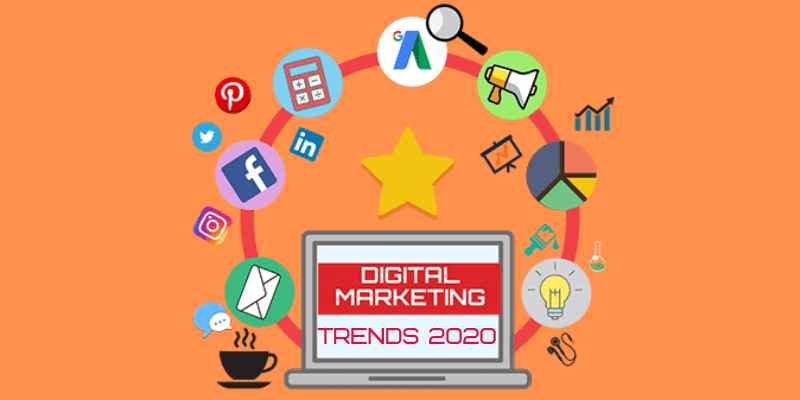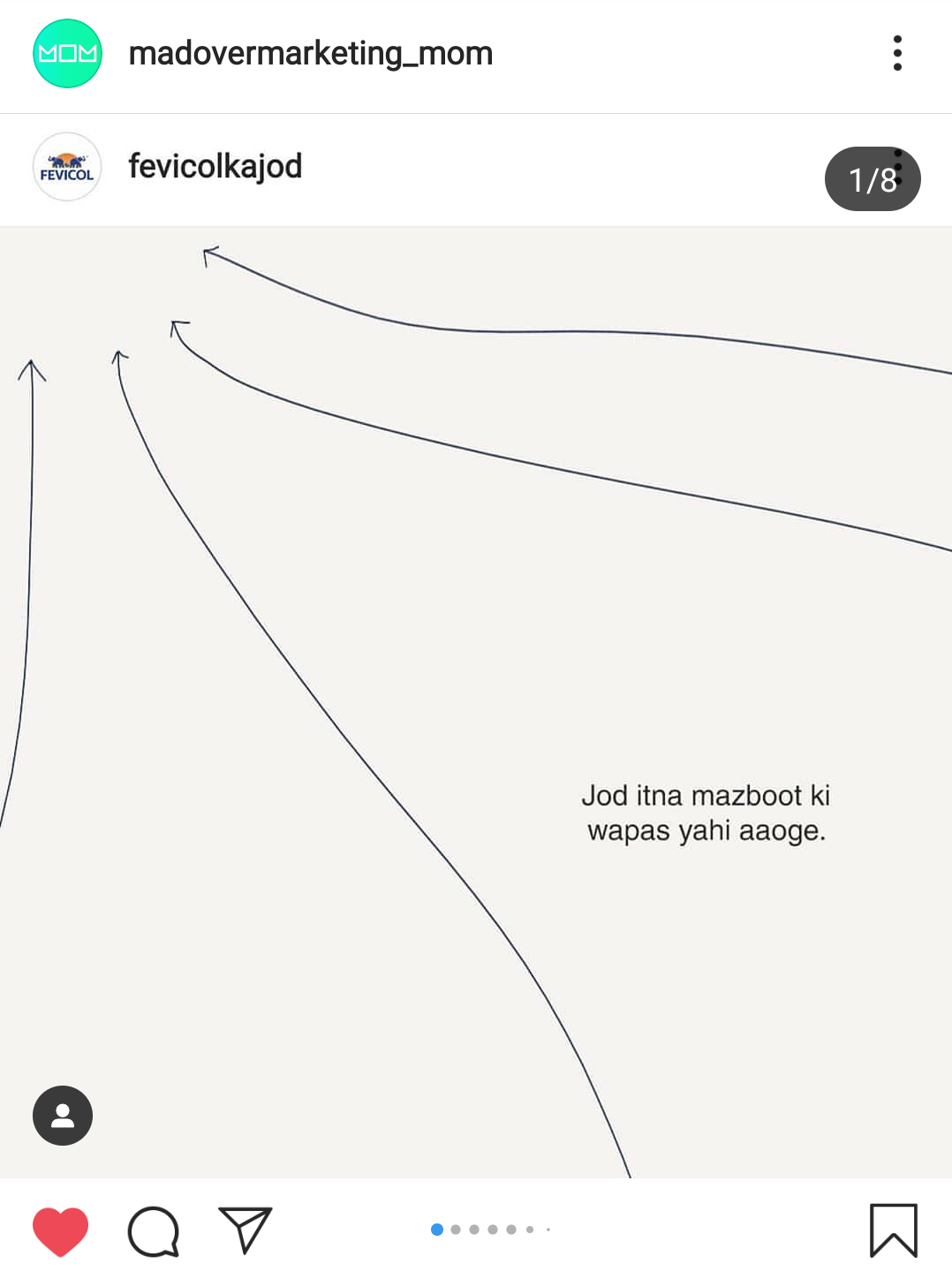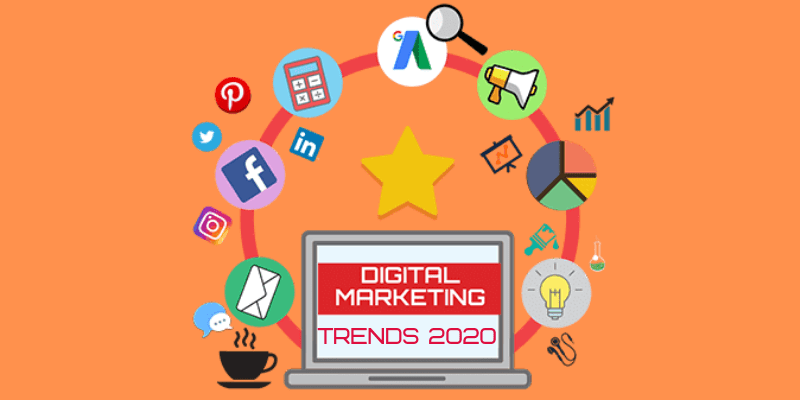
The world of marketing is a dynamic one. More often than not a contrarian marketer, bored of the same old repetitive marketing techniques, starts a new trend. However, a trend is like a sapling, at the foundation of which is a seed or an “idea”. Just the way every seed sown, may or may not become a sapling, every idea may or may not give birth to a trend. The journey in between is what decides whether it is a yay or nay! Meaning, the way a brand plans, executes and showcases the idea decides its fate. If not done well, it becomes a passe. But if done well, it becomes a trend. Some are seasonal — they come and go and then come back again when another brand brings it back with an innovative spin. While some good trends even hold potential to become classics, giving life to multiple brand campaigns and land straight into aspiring marketers’ textbooks as case studies. The term “top” is also subjective to time. Every trend follows its curve of fate. These trends are no sure shot solutions to guarantee the drive of your user across the stages of the marketing funnel. Hence the term “promising” sounds, well more promising when describing the ever-changing world of marketing trends. So here are the top most promising trends in digital marketing.
- Video OTT is here to stay and become bigger

A recent joint study by ASSOCHAM-PwC noted that India is likely to be amongst the top 10 markets globally by 2020 with market size of USD 823M.
It doesn’t come as a surprise as video streaming services are only getting bigger in India, to the point where several people have stopped recharging/ significantly reduced the package amounts of their DTH services, in favor of content streaming services. Every new release on streaming platforms is a big event with significant investments in its promotion. Besides competing to be the first platform to make available outside content, these streaming services are also competing hard to produce and release engaging “original” series and movies. When “House of Cards”, a Netflix original, released back in 2013, it was a defining moment for the platform which quickly became a powerhouse with the series. From then on global platforms like Netflix and Amazon and Indian players like Hotstar, Zee and more have been competing hard to increase their subscription base. Not just engaging content, but many of these platforms gave “binge-watching” a whole new meaning by releasing all episodes at once, further hooking on the users to the available content. With so much content to watch and so many streaming services to choose from, It’s a great example of healthy competition in the market. It will for a long time ensure good and meaningful content for users.
2. Brands are moving from macro to micro-influencers

Now, why would a brand leave the opportunity to receive millions of impressions and engagement on their brand posts via macro-influencers, TV/movie actors or reality TV stars?
Because higher impression doesn’t translate to higher purchase intent and higher engagement doesn’t mean relevant engagement.
Let’s look at it this way. When buying social media real estate, a brand always looks at investing money into the channels that seem most logical to reach the desired user segment. Twitter is too niche, Facebook is too mass-y and Instagram has its own content strategy. This is what we hear brands saying when doing paid social. Brands are applying the same thought process when choosing the influencer they want to associate with. More often than not, a shiny new smartphone releases and our social media feed is flooded with multiple brand posts from macro-influencers. But does this motivate me to buy the product or seem too promotional and less genuine? It’s the latter in most cases. Which is where micro-influencers seem to do the trick. Their fan following is more niche and loyal. They seem genuine enough to do their research on the product rather than blindly put up the post, and which is why they are more likely to have their followers complete the desired action without seeming too promotional. Recently, tech giant Google integrated with multiple micro-influencers for the launch of its smart home display device — Nest Hub. However, every influencer boasts a unique personality and followers base. Hence, it’s always a good idea for brands to pick and choose influencers who resonate with the brand image and the product — be it macro or micro.
3. Brands are running ads with no logo and brand name

Very few brands globally have been bold enough to execute and run campaign ads forgoing their brand logo, name, and taglines. More recently Doritos joined the likes of brands embracing logo sans marketing with their “Another Level” campaign consisting of TV and digital, social media, OOH and blurring their logos on Doritos chip bags. Instead, they played with Gen Z’s — the primary target segment, brand recall by building upon the iconic triangle design, classic chip bag colors and other attributes, in the hopes that consumers would recognize the brand. While this trend has been more prominent globally, it has just now started gaining traction in India.
Magicbricks recently, ran a full-page newspaper ad as part of their “Pata Badlo” campaign, without their brand logo.
Thus, becoming one of the first few Indian brands to embrace this trend. This trend, which was brought into mainstream marketing thanks to Canadian author Naomi Klein’s 1999 release “No Logo”, is specifically aimed at millennials or Gen Z who are bored of today’s excessively branded campaigns and argues to move towards more sophisticated and self-conscious branding. Whether or not it works in the Indian market, it sure is a bold move in changing branding practices.
4. Brands are celebrating the rise in user-generated content
With the likes of Tiktok and Youtube being embraced by large masses of content creators, user-generated content is surely on the rise — especially with the increase in vernacular creators. According to Satya Raghavan, Director of content partnerships at Youtube, 60% of Youtube viewership in India comes from outside of the six large cities, with 95% of it in Indian languages. Short-form videos made popular by Tiktok, have given confidence to many to create and upload content on the platform. With such an increase in UGC, both in English and Non-English locales, brands are wasting no time to make use of such readily available content and incorporate in their digital and TV campaigns.
This not just reduces agency costs and cost of shooting, but majorly reduces the time from conceptualization to campaign launch.
Such ads may also prove to have better engagements as viewers may find this both hilarious and innovative.
5. Brands are leveraging social impact marketing to realize objectives
Whether the objective is to increase trials, drive usage or sales conversion, many brands are taking the route of PR-able social impact marketing. This usually involves brands, especially tech giants, activating their products in rural areas and drive folks’ interaction and usage with the product by highlighting use cases relevant to them in their daily journeys.
One such example is Amazon Alexa, a voice assistant being installed in a mannequin dressed as a teacher, and helping our school kids in rural areas with their classroom studies.

While there is an extent to which such products can serve the folks’ and their purpose, it does create a social media-worthy and PR-able story for the brand, while also giving the rural folks a unique opportunity to get a first-hand experience with such innovative products — an opportunity which otherwise may not become reality for many. This brings me to the next trend on the list.
6. Brands are embracing the masses
For a very long time, only a select group of products were marketed to tier 3 cities and small towns, deeming the more advanced and superior product types unsuitable for these user segments. But as the quality of life has consistently improved across India, user awareness too has increased and consumers, especially millennials are exhibiting similar user behavior and needs as the bigger metros. This has given rise to numerous opportunities for brands to expand their base and harp on to the first-mover advantage in multiple such places — and brands are wasting no time to seize these golden opportunities.
From investing in elaborative ATL activities to setting up pop-up stores for users to experience their products, brands are leaving no stone unturned to woo these users.
Be it premium FMCG products to consumer electronics and the more advanced AI-based products, users across the country are ready for these and much more.
7. AI continues to be big, albeit addressing the most basic user needs
The most advanced solutions today are built upon the foundation of AI and ML — be it Lifesciences, manufacturing, Industry 4.0 or Research and tech, AI is revolutionizing every aspect of these areas. Yet for an average everyday user, AI at this point of time is merely trying to mimic and simply automate activities of the user’s daily journey. It can call or send a message for you, play your favorite music, create calendar entries, control your TV and nearly every device in your house. So while it pretty much builds next-gen solutions that hold potential to fight chronic diseases or intimate of a fault before the machine fails. For everyday users, AI simply automates their basic tasks and devices they interact with daily. Every user has a learning and adoption phase and this phase can be quite long and complex in the case of a disruptive technology — it significantly alters the way a user’s life works. There’s a natural progression in habit building with such innovations and users take time to make these an integral part of their lives rather than a passing phase. Hence, while everyone agrees AI is the future, there’s still time to fully make this a reality for everyone. Until then, users and brands alike would keep learning just the way a machine learns and gets better at what it does.
8. Brands are turning to Behavioral Science to improve user engagement
Experimentation! That is what ensures no brand becomes complacent with their marketing techniques and this is how brands build robust precedents and learnings. Behavioral science is finding its use beyond psychologists and into the world of marketers. Brands are experimenting with BSci principles in their owned & operated and paid platforms alike. Be it incorporating these principles in email subject lines or the messaging and CTAs of push notifications and DR campaigns, BSci is quickly becoming a go-to for experimentation purposes. Principles like ‘personalization’ where people are more receptive to personalized messages rather than generic ones, or ‘endowment effect’ wherein people are more likely to complete an action for a product/experience they already possess rather than expending energy into acquiring one or the popular ‘IKEA effect’ where users give more value to products and experiences they co-create — these are just a few of the principles brands are incorporating. BSci holds the potential to truly understand user behavior and act upon it.
9. Personalization in consumer marketing will significantly alter in the future
Personalization in brands’ marketing comms is mostly a welcome gesture by a user. However, the level of personalization will significantly alter in the coming years. As an average user is becoming smarter by the day and more informed, it’s become imperative for governments across the globe to act upon the issue of privacy. GDPR greatly changed the way companies stored, consumed and made use of consumer data. With the upcoming “Data privacy law” in India, the way companies, especially global corporations, store Indian users’ personal data will significantly change, with possibly an authority set up to prevent any misuse. Given the current environment of data usage, such laws are welcome moves in keeping both the user and the brand informed and responsible.
10. Real-time marketing to keep brands’ presence real and relevant



With the growing usage of social media, real-time is the reality. From a new template being introduced and spreading like wildfire across social media with brands latching on to it and sharing their version of it, to a brand creating a post in response to competition, thus engaging in a fun banter — its all lost and old news if not done well at the moment.
Brands are rightly investing in resources for their social media who while keeping the general content theme engaging and relevant on their handles, can also quickly act upon such ‘in-the-moment’ trends for their brands.
Not all trends can prove to be successful for a brand — some may be irrelevant for your product/experience or some may just not be well executed. With a healthy and logical approach of ‘pick and alter’, well-chosen and executed trends can very much help your brand stay relevant and visible to your user. Nonetheless, all these prove to be a great repository of learnings for a brand’s future activities and campaigns.
P.S. Original articles Published on October 17, 2019 on medium
https://medium.com/@vijayvsocial/consumer-10-digital-marketing-trends-for-2020-96b7113e12d8
